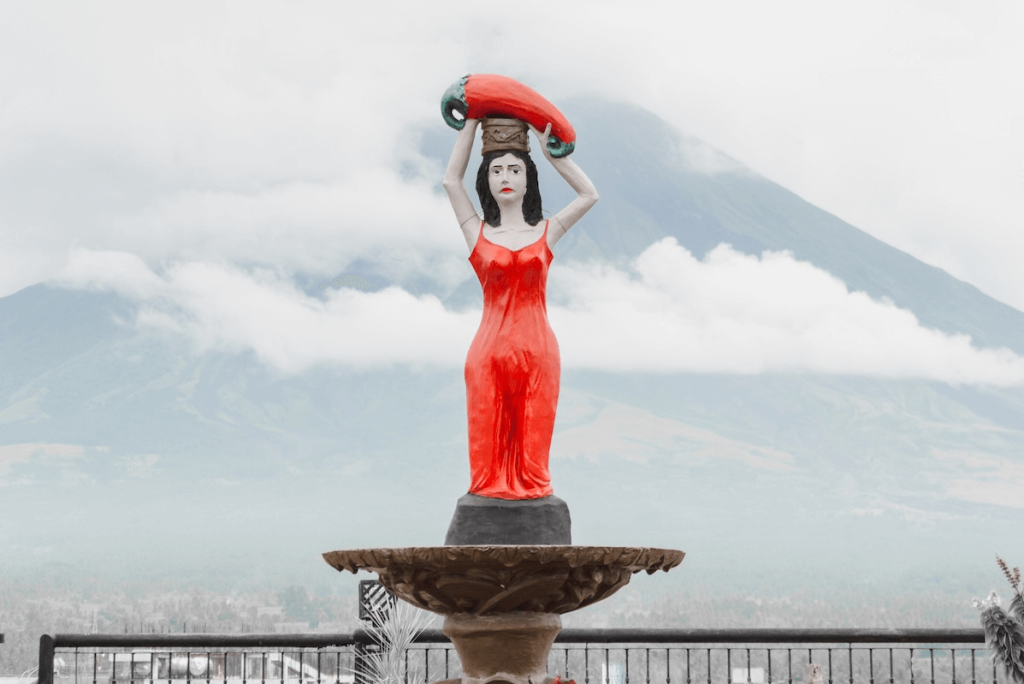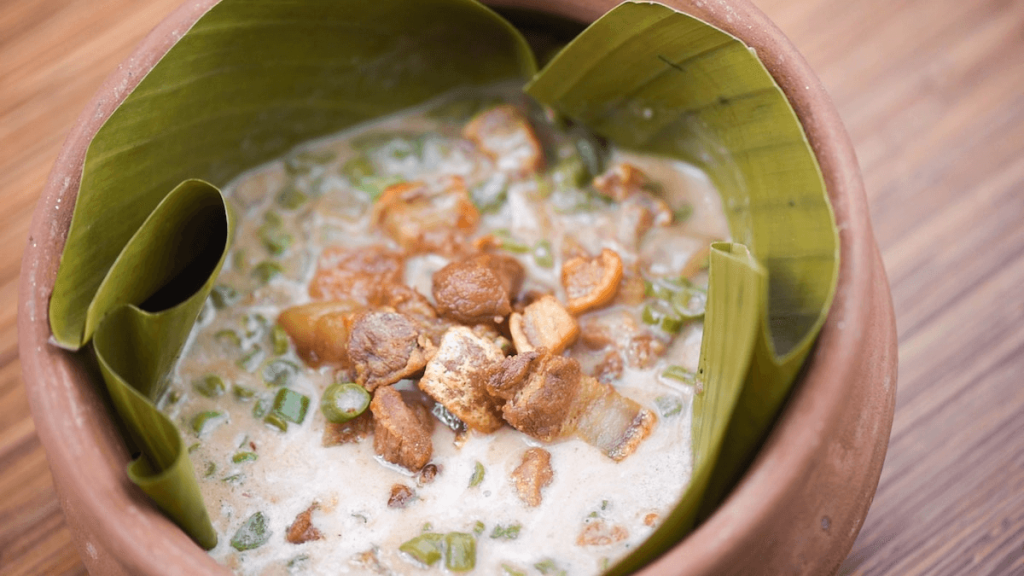
Grand Festivals across the Philippine Islands
Luzon
Philippine festivals are celebrated grand in every way across the archipelago. They are as colorful as the regions that host them. In Luzon, there are numerous festivities in the land of national heroes, Bulacan. The Pagoda Festival in Bocaue, Bulacan, celebrated annually during the month of July is held in Bocaue River highlighting the miraculous cross floating in Wawa, while the Obando Festival is a fertility rites. The Gigantes Festival in Angono, Rizal features a parade of hundreds of giant paper puppets. Then there is the famous annual flower festival Panagbenga Festival in Baguio held every February. The Giant lantern festival in San Fernando, Pampanga features colorful lanterns during the holiday season. Pahiyas Festival in Quezon Province is a thanksgiving festivity for a bountiful harvest and honor patron saint of farmers, San Isidro Labrador. The Moriones Festival in Marinduque is one of the religious festivals in the country and inspired by the Passion of Christ. Held during Holy Week, performers don on Roman soldiers costumes and from Holy Monday to Easter Sunday, they march around as Roman soldiers searching for Longinus, who converted to Christianity after receiving healing from Christ.
Visayas
Visayas has its fair share of vibrant festivals. One of the biggest festivals in the country is the Sinulog Festival in Cebu City, attracting up to 15 million people yearly. The Ati-Atihan Festival of Kalibo, Aklan is another festivity that honors the infant Jesus. The Dinagyang Festival in the province of Iloilo is a celebration of the Ati people held every fourth Sunday of January after Sinulog and Ati-Atihan. Performers dress up like Ati warriors painting their face and body, black. The Paraw Regatta Festival is also done in Iloilo and considered one of the oldest traditional craft event. Paraw is the Visayan double outrigger sailboat. You must also not miss the Masskara Festival in Bacolod City held every fourth Sunday of October. Masskara, meaning a multitude of faces, features street dance competitions where street dancers vie in an annual competition, wearing masks with smiling faces — alluding to Bacolod being the “City of Smiles.”
Mindanao
Lastly in Mindanao, Davao’s Kadayawan Festival, arguably the most popular event in the whole of Mindanao. This much-anticipated colorful festival highlights the indigenous tribes of Mindanao.
Other Exciting Festivals Worth Attending
There is also the Pineapple Festival, Hamaka Festival, Pintaflores Festival, Sandugo Festival , Pinyasan Festival, Busig on Festival – with the list going on and on.
These festivals highlight dance competitions with vibrant street dancing, agro industrial fair, beauty pageants, horse races, sailboat race, river procession and the much loved food festival.
Beautiful Bicol
Southern Luzon is no different from the rest of the regions. Bicolandia is a beautiful region in the Philippines, home to the majestic cone of Mayon Volcano, the calming aura of Caramoan National Park, the ruins of Cagsawa, and the stately Daraga Church.
The region, which comprises Albay, Camarines Norte, Camarines Sur, Sorsogon, Catanduanes, and Masbate, is also a must-visit diving spot and one of the best locations for water activities such as kite surfing and kayaking. But did you also know that Bicolano cuisine is something to rave about?
The Bicol region is not new to these festivities. Bicolano dishes stand out from other local cuisines because they heavily use chili peppers (sili) and coconut milk (gata). Two of the most well-known Bicolano viands, which you can find in many Filipino restaurants, are Bicol Express and laing. But have you ever tried the lesser-known yet equally sumptuous pinangat or inolokan? More importantly, have you ever had a pili nut dessert?
Gastronomy in Bicol has become its unique branch of Filipino cooking, carving a spot in the archipelago of taste signatures. With its ingredients now widely available, people can cook their Bicolano dishes in the comfort of their homes; yet, there is just something special about trying it where it was first invented and cooked with fresh and natural ingredients.
Did the thought make you crave some Bicolano food?
Never fret; the Food Festival in Naga City that celebrates Bicolano cuisine will run throughout September. But before you start packing your bags for a visit, here is a quick guide to Bicol’s native dishes to get yourself the best kaon a la Bicolano experience!
Pinangat na isda
Pinangat na isda, pangat na isda, or simply pangat, is a delicious fish dish cooked with tomatoes. There are two versions of the dish: one with a broth made with vinegar and souring agents such as kalamansi (Philippine lime), kamias (bilimbi), santol, or sampalok (tamarind), and another Bicolano version made with taro leaves, chili peppers (sili), and coconut milk (gata).
The standard version of the dish is easy to make—simply put all the ingredients together in a pot and let it cook. However, The Bicolano version can be tricky because cooking with coconut milk requires the right consistency, which is essential for the dish to turn out well.
If you want to try something different, you can go for the crab version of the dish called inolokan or tilmok.
Though the dish might seem simple, Bicolano pinangat is not to be underestimated. Bicolano cuisine is known for being spicy, but the creaminess of the coconut milk can help quell the effects of the capsaicin and give the dish a unique taste.
Picadillo
Bicolano picadillo is a dish that might initially confuse you because it shares its name with other dishes. But unlike those other dishes that use meat, Bicolano picadillo is similar to rellenong isda (stuffed fish) because it also uses fish as its protein source.
Picadillo is cooked similarly to pinangat na isda but with a few differences. The fish is wrapped in Chinese cabbage (pechay), and a mixture of ginger, garlic, and onions are stuffed inside the fish to add more flavor.
Cocido
Cocido, also known as kusido, is a dish that puts a local twist on another popular Filipino dish called sinigang (tamarind stew). This dish is unique because it does not use the typical ingredients found in other regional variations of sinigang, such as chili peppers and coconut milk or water spinach and sweet potato greens. Instead, it uses moringa (malunggay) leaves. Also, instead of using tamarind as a souring agent, kalamansi gives the dish a tangy taste.
Laing
Now we have one of Bicol’s two most popular dishes. Laing is shredded taro leaves cooked in coconut milk, mixed with meat—common choices include pork, tinapa (smoked fish), and balao (fermented rice and shrimp).
This creamy and spicy dish has been experimented on numerous times and is known to be highly versatile, having found its way as a pizza topping and lumpia (spring roll) filling. Of course, it can always be enjoyed with a cup of steaming rice!
Bicol Express

Of course, we couldn’t forget about Bicol’s most famous—Bicol Express! The main highlight of eny and every banquet. No list of Filipino or Bicolano dishes would be complete without it. Many people love it, but there is an ongoing debate about where it came from. What we do know is that it is inspired by Bicolano cuisine, using its main ingredients – chili peppers (sili) and coconut milk (gata).
The dish, reportedly, was originally made as a less spicy companion to laing. Bicol Express, however, took off and introduced the broader pantheon of Bicolano cuisine to the general public. It could be that less spice made it acceptable to non-Bicolanos, or maybe the catchy name caught people’s attention. Whatever it is, the dish certainly lives up to the hype.
Bicol Express has become a staple, not just in Bicol-based establishments but in every Filipino restaurant nationwide. Like laing, the fiery dish has become popular enough to be sold in retail and incorporated into other delicacies such as pizza toppings and chips.
Like the rest of the list, these dishes are best served with rice; after all, Filipinos are rice-eating people. Like the rest of the country, Bicol offers a wide range of dishes made with creativity and resourcefulness. Whether it is an ingredient found around their surroundings or sourced from a remote location, Filipinos will find a way to make a dish out of it.
Like the other dishes on the list, these Bicolano dishes are perfect with rice— Filipinos love their rice! As the rest of the country, Bicol has lots of dishes made with creativity and smart use of resources. Filipinos can make a dish out of anything, whether it is an ingredient found locally or sourced from far away. And as Filipino cuisine shows, food is a universal language that brings people together.
Santerra: Right in the Heart of Everything
Vista Land’s prime estate Santerra is in the middle of Naga City, in the center of Camarines Sur. In the southeastern portion of Luzon, Naga City is connected to the country’s capital via the Maharlika and Andaya Highways. Situated at the heart of Bicol, it is also the hub for goods from Manila and the Visayas.
Santerra is conveniently perched between uptown and downtown Naga. To its left is downtown Naga, the city’s central business districts (CBDs). To its right is uptown Naga, abounding in nature-inspired attractions such as hot springs, waterfalls, and the scenic Mt. Isarog Natural Park.

Celebrate Life’s Milestones in Camella!
Make unforgettable memories in a Camella home.
Our communities are designed to elevate your living experience.


